Moon via remote telescope
Finally was able to make maximum resolution photo of Moon via remote telescope with highest resolution (0.63 arcsec per pixel). Major complication was that when I was calculating moon coordinates using Stellarium based on local time (taking into account 7-10 minutes for telescope preparation), geographic coordinates and moon orbital parameters - I was missing moon by 1/2 of it's diameter. But when I did the same for stars - I was dead center on the star.Not sure why did this happen - it's hard to believe that orbital parameters on Moon were not precise in Stellarium. So I had to add extra pre-compensation to coordinates. After some trial and error, I finally hit moon dead center:
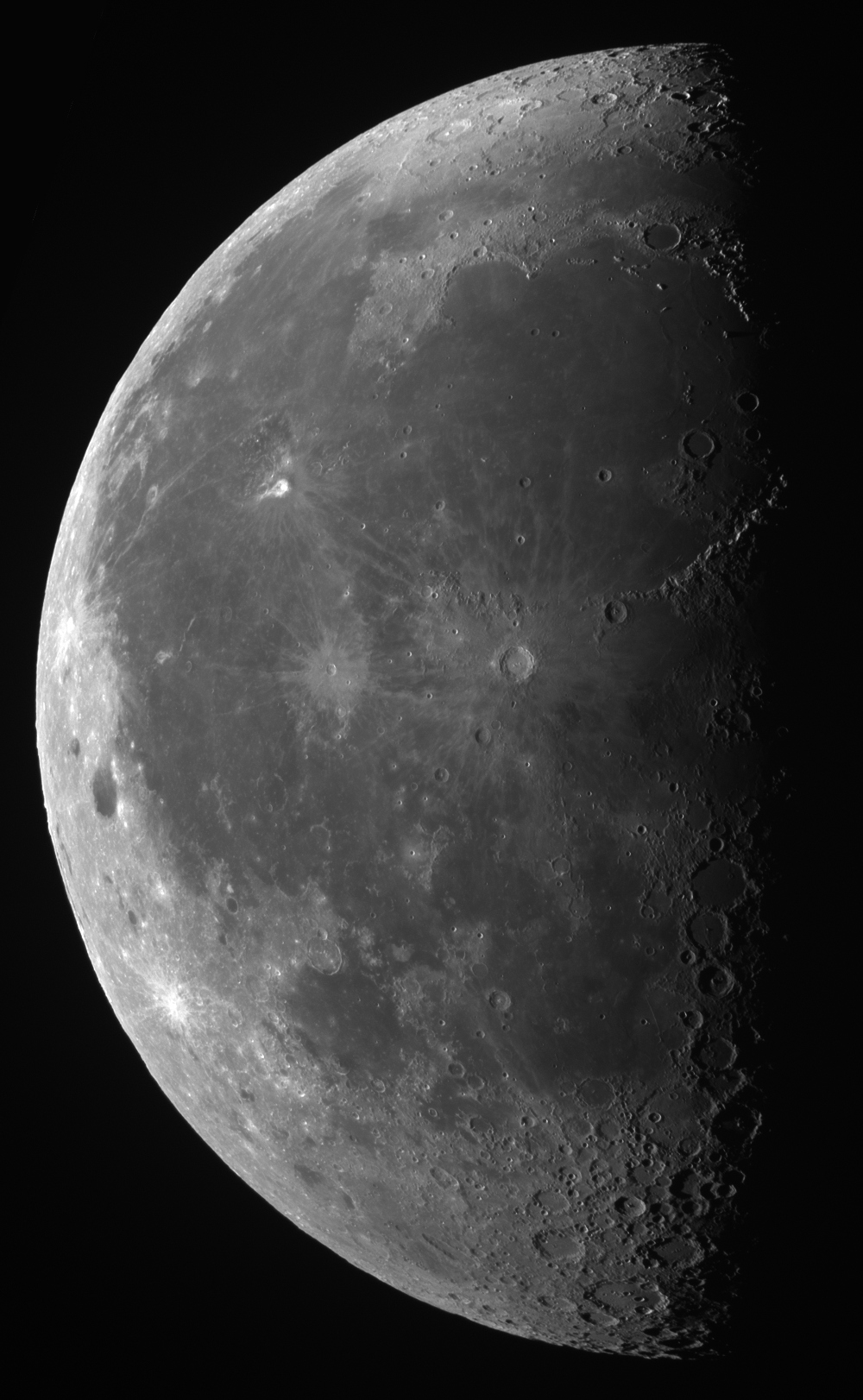
M1 - Crab Nebula
Made a photo of Crab Nebula via "couch telescope" iTelescope T7.10 minutes for each channel, Ha (red channel), Sii (blue), Oiii (green). I.e. different colors - are different chemical elements (hydrogen, sulfur, oxygen) generated during nova explosion. We are looking here at the process of creation of the new world :–)
BTW Explosion of this nova was first observed just 959 years ago. It is even possible to see changes in Crab Nebula over the years.
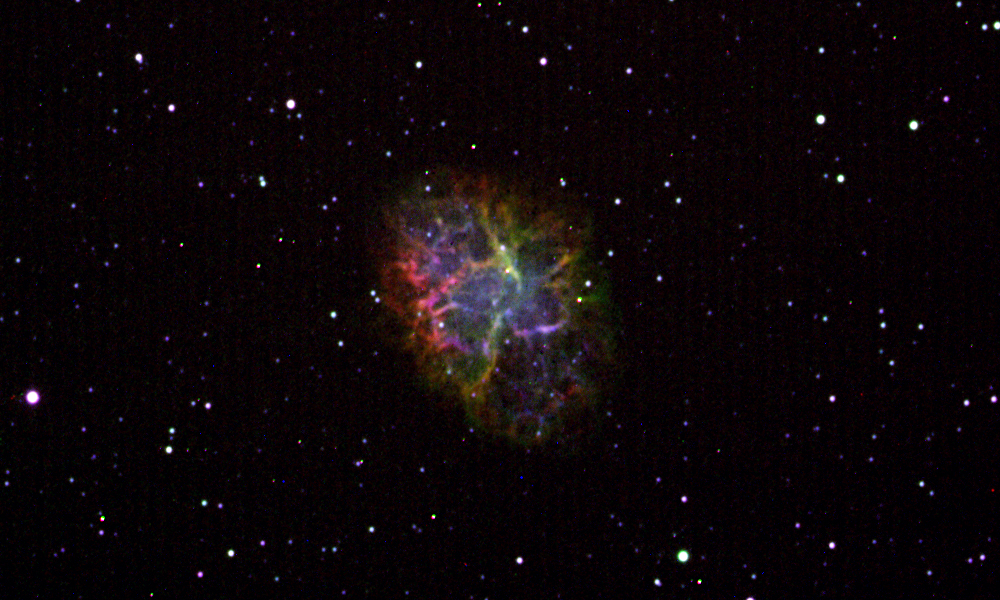
Same without filters:
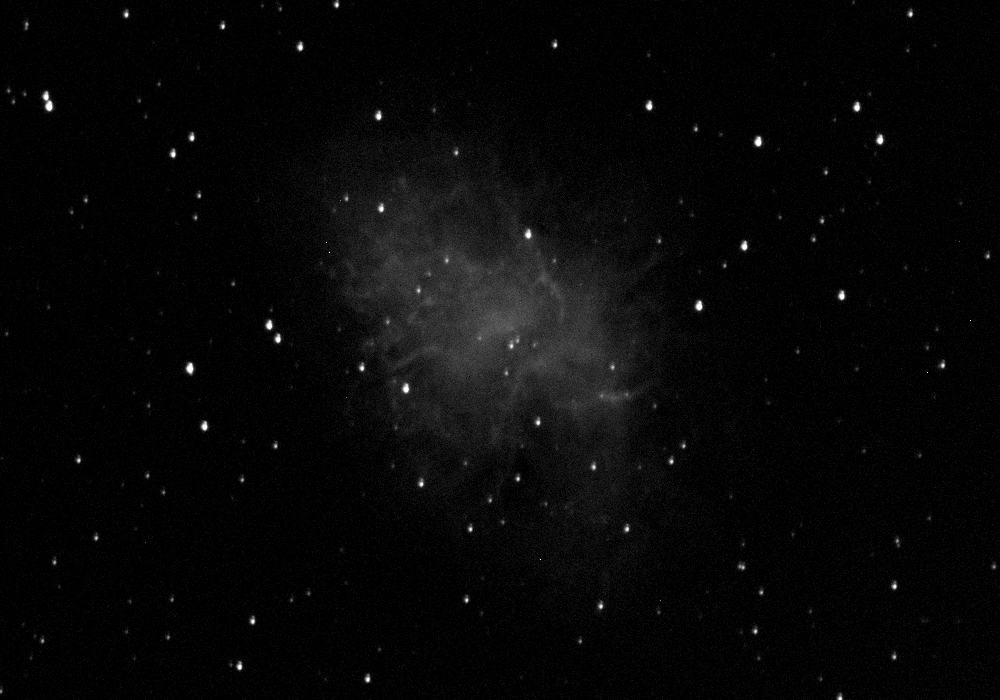
CD & DVD under microscope
I knew that there are tracks, but never was able to see them. My old pocket microscope was too weak.Update: Photos remade with new camera. Also figured out how to make a good photo of DVD - I needed to brutally crack disk at half of it's thickness to directly access surface with written data.
Track interval is 1.6µm for CD and 0.74µm for DVD.
CD

Photo of AMOLED display of Galaxy S4 mini and others
Update: Just realized that AMOLED means Active Matrix, so there should be transistors and some circuitry which I need to take a look at!Suddenly my HTC One V died - blinked some random garbage on screen and became dark, discharging battery below 0%. I am not going to buy HTC again - I am far from happy with their policy of not updating Android on their 'small' phones.
As I am cool enough to buy non-top-of-the-line phones, I gone for Samsung Galaxy S4 mini. Why on earth all manufacturers have so much love for gigantic phones...
S4 mini has my beloved AMOLED display which promises longer battery life, 1.5Gb of ram is more than enough, 28nm Krait CPU (1.7Ghz, 1Mb of L2 cache) is perceivably faster than Scorpion (MSM8255 - 1.4Ghz, 45nm, 384kb L2 cache) and playing with NFC is fun. Finally it has LTE support - we already have LTE-capable networks here in Moscow - will be interesting to test it out. Also GLONASS is working

I decided to take microscope photos of displays of various devices I had at hands. Scale is the same on all photos:
Samsung Galaxy S4 mini - AMOLED:
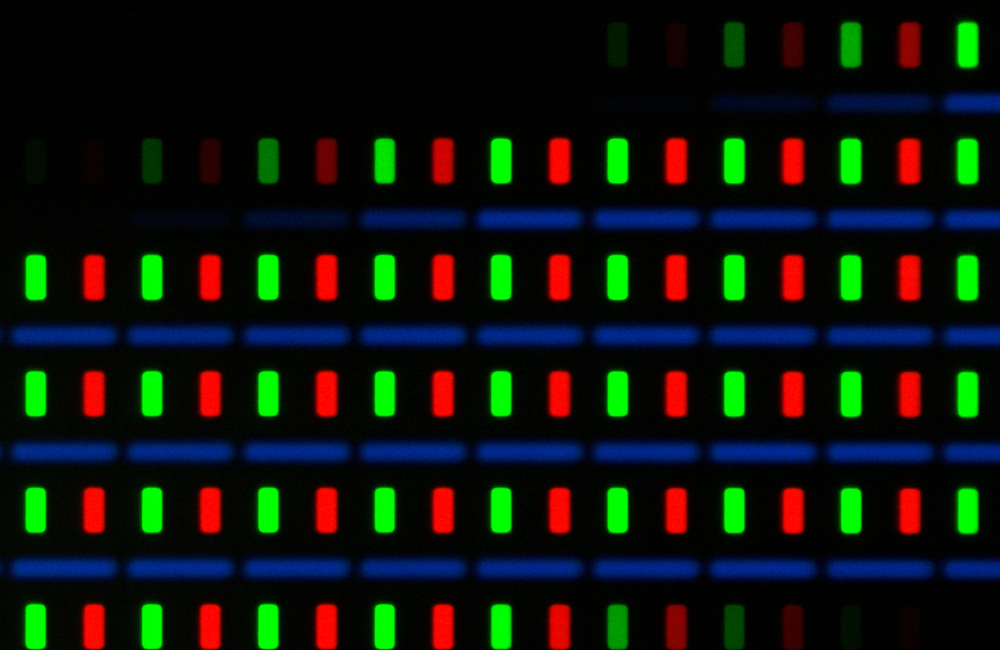
MAKS 2013
Weather was far from ideal, but in other days it was even worse. Hopefully they will shift MAKS 2015 earlier to the beginning of August.There is no T-50 (PAK FA) on the video - I was too late for it by mere 15 minutes

Overclocking Arduino with liquid nitrogen cooling. 20⇒65.3Mhz @-196°C/-320°F
 Before I start I guess I must answer 2 questions which would be asked inevitably:
Before I start I guess I must answer 2 questions which would be asked inevitably:1) Why? Because I can. To learn how electronics behave at cryogenic temperatures. And just curios how much juice you can squeeze out of AVR if you push hard enough. This also produced some results relevant to desktop processors overclocking with liquid nitrogen cooling.
2) Why Arduino UNO (ATmega328P-based) while there are many faster microcontrollers? Just because it seems that Arduino is more popular among geeks and amateurs. For practical applications it is easier and cheaper to just use Cortex-M3/M4 based microcontrollers or FPGA (and I had these devboards too) instead of trying to overclock poor Arduino :-).
Overclocking microcontrollers with liquid nitrogen cooling promises to be harder, than overclocking desktop processors : there are no stability tests, no on-board programmable frequency generator (at least on AVR microcontrollers), no programmable supply voltage. Also, it appeared that a number of on-board components were failing - so I had to deal with them individually. Luckily for me all these problems were sorted out at the end.
ULN2003 - practical example of «reading» microchip schematic
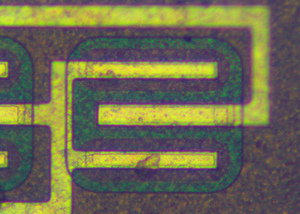 We often receive comments that while our microchip photos are beautiful and interesting, it is completely unclear how integrated circuit implements basic elements and form larger circuit. Of course it is impossible to do a detailed review of an 1'000'000 transistor chip, so we've found simpler example: ULN2003 - array of Darlington transistors.
We often receive comments that while our microchip photos are beautiful and interesting, it is completely unclear how integrated circuit implements basic elements and form larger circuit. Of course it is impossible to do a detailed review of an 1'000'000 transistor chip, so we've found simpler example: ULN2003 - array of Darlington transistors. Despite it's simplicity this microchip is still widely used and mass manufactured. ULN2003 contains 21 resistors, 14 BJT transistors and 7 diodes. It is used to control relatively high load (up to 50V/0.5A) from microcontroller pin. Canonical use case - controlling segments of large 7-segment LED displays.
Read more on zeptobars.com →
Liquid nitrogen and sugar phosphorescence
Finally managed to play with liquid nitrogen!It appeared, that it's sold near my house, about ~1.5$ per liter.
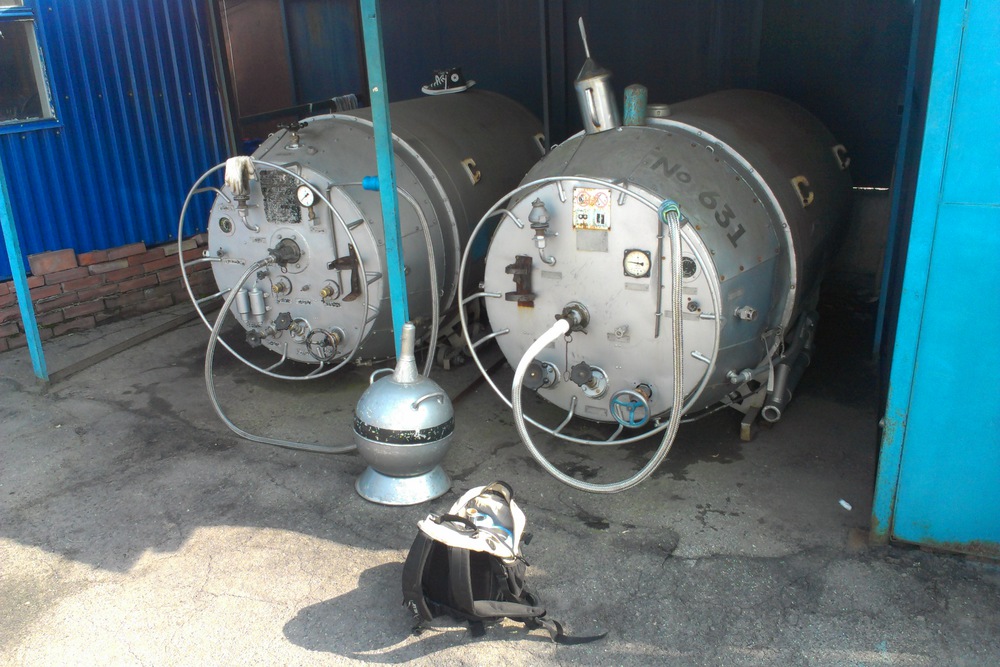
Radioactivity of natural potassium
Accidentally realized, that natural potassium is radiactive. it has ~0.0117% Potassium-40, which decays with emission of beta-particles & gamma radiation. Radiation levels through are safe even with 1kg of KOH.I had to remove energy-compensating cover on the Geiger tubes to detect more of beta particles.
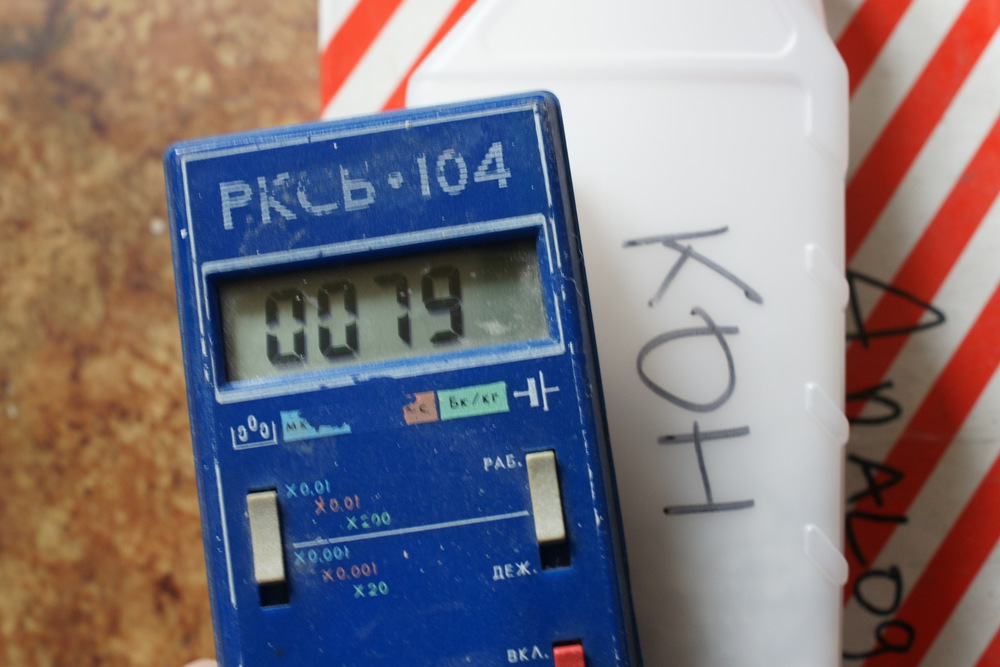
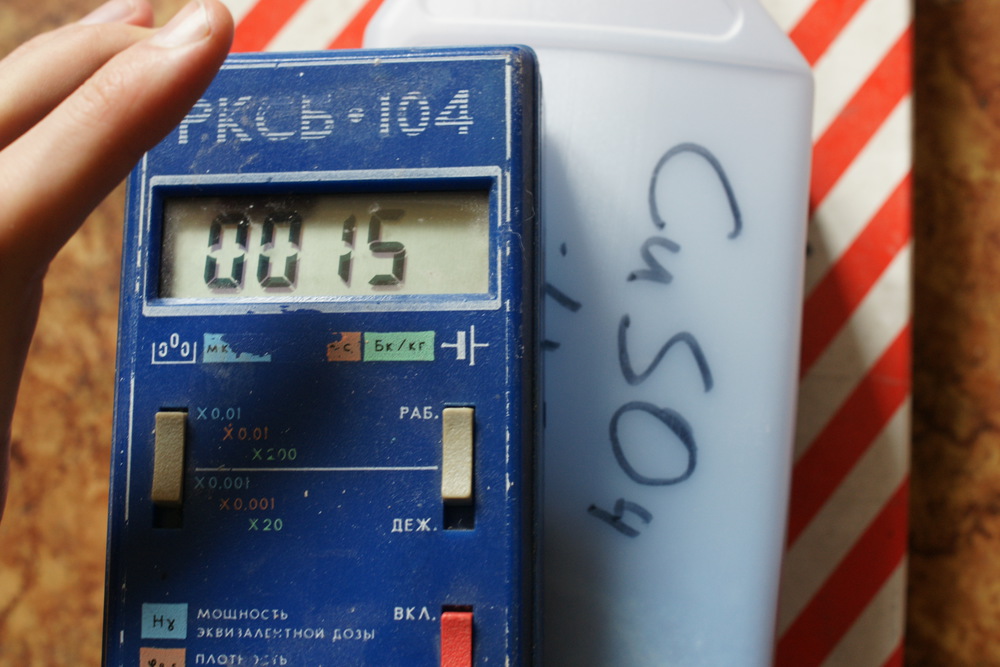






 @BarsMonster
@BarsMonster